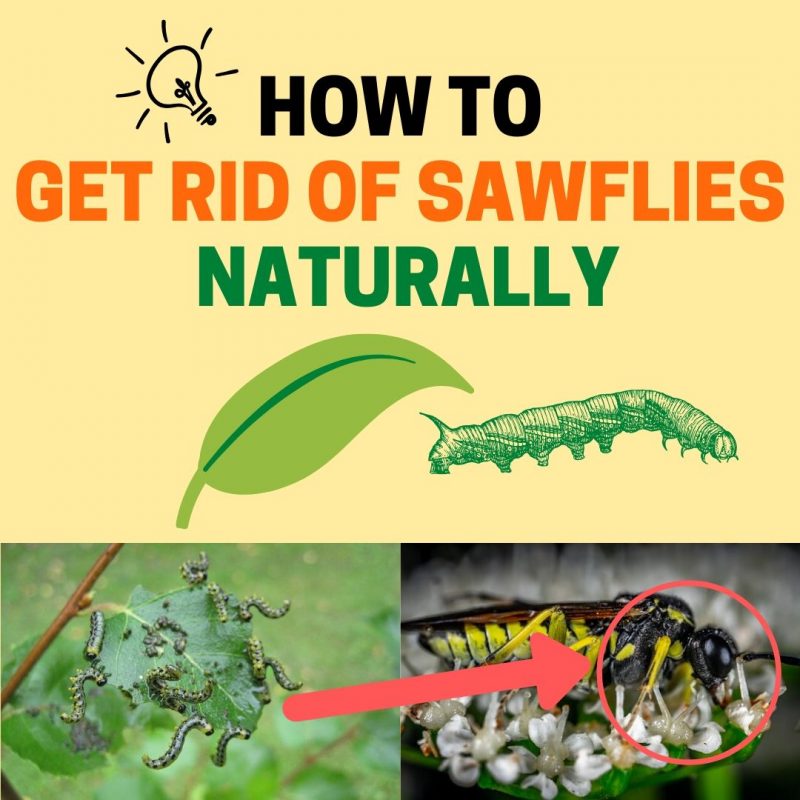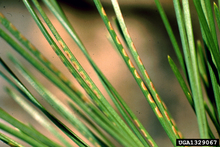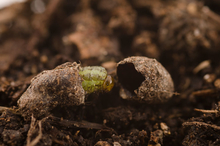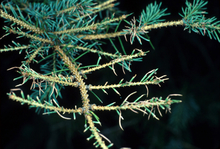Insecticide For Sawfly
Most sawflies in Minnesota have one generation per year (that is it takes one year to go completely through their life cycle once), although some go through two generations.
Adult females use their saw-like ovipositors to cut slits into needles, leaves, or tender new shoots to lay eggs.
Eggs hatch into larvae that feed on foliage of their host plants for about four to six weeks.
- It is common for most sawflies to feed gregariously, in non-social groups.
- When in such a group, if they are threatened, they can simultaneously raise and arch their bodies as a defensive tactic (presumably to scare away would be predators).
Many sawflies overwinter in the soil as pre-pupae (the stage between a mature larva and pupa) or pupae in cocoons; some species also overwinter as eggs or larvae. Adults typically emerge in the spring or early summer.
When sawflies are first active in the spring depends on:
- Where in Minnesota they are found (generally the further north in the state, the later they will first become active).
- Whether spring is early, late, or normal.
Damage caused by sawflies
Sawfly feeding can vary from slight to severe. The larvae typically feed in groups, and it is not uncommon for feeding to occur on just a few branches, although a severe infestation can cover an entire plant.
Conifer-feeding sawflies:
- Some species emerge very early in the spring before new growth on trees has occurred and eat older needles from previous years.
- Sawflies emerging later in spring feed on new growth.
- A few species eat both new and old foliage, and these species can completely strip conifer trees of their needles in one season.
Deciduous plant-feeding sawflies
- Larvae often feed along the edges of the leaves and can chew the leaf blade down to the midrib.
- Slug sawflies feed by chewing leaf tissue on one surface of the leaf between the veins, a type of feeding known as windowpane feeding.
- Damaged leaves at first are whitish; eventually these injured areas turn brown.
Healthy, mature deciduous plants can typically tolerate sawfly feeding in one season.
- Even when it is severe, as deciduous plants can regrow leaves.
- However, recently transplanted trees and shrubs and plants that have been severely defoliated in several consecutive years are more susceptible to injury.
Sawflies attacking conifers feed on the surface of needles at first, leaving needles discolored, distorted, and straw-like.
- As the larvae grow larger, they consume entire needles.
- With the exception of tamarack, conifers do not regrow new needles once they are consumed.
Even if sawfly defoliation does not impact plant health, defoliation may negatively affect the appearance of trees or shrubs.
How to protect your plants from sawflies
Management for sawflies depends on many factors:
- Time of year
- Health of the plant
- Conifer or deciduous tree or shrub
- Number and size of sawfly larvae
Insecticide For Sawfly
Sawflies are a common pest on deciduous trees, especially maples and willows. They can cause significant damage to your tree if left untreated. Here’s how to identify sawflies and how to use an insecticide for sawfly control.
Sawfly Identification
Sawflies are small insects that resemble wasps or bees. They have long, thin bodies that are covered in bristly hairs, and they have wings with a short body length. The larvae (immature form) look like caterpillars, but they have fewer segments than caterpillars do. Sawfly larvae have a segmented body with three pairs of legs per segment, while caterpillars have five pairs of legs per segment.
Adult sawflies have a slender body with narrow wings that fold over the abdomen when not in flight. They are usually between 1/2-inch and 1-inch long (about 12 mm to 25 mm). The most common species in North America is the green June beetle sawfly (Polyphylla decemlineata), which has an emerald green thorax and abdomen with black markings on each segment of its body; however, there are many other species found throughout the country as well.
List Of Insecticide For Sawfly
- INSECT KILLER: Kills Aphids, Caterpillars, Whiteflies, Japanese Beetles, and more on contact
- 30 DAY PROTECTION: Protects against listed insects for up to 30 days
- USE ON: Roses, flowers, plants, and even houseplants
- RAINPROOF PROTECTION: Rainproof within 1 hour of application
- COVERAGE AREA: Treats up to 34 plants
- RESTRICTIONS: Restricted in CT, MD, & VT. Not for sale, sale into, distribution, and or use in Nassau, Suffolk, Kings and Queens counties of NY
Additional Info :
| Color | Ready-to-Use |
| Item Dimensions | |
| Height | 11.25 Inches |
| Width | 2.19 Inches |
| Length | 5 Inches |
| Weight | 0.00024 Pounds |
- INSECT KILLER: Kills 100+ insects including Aphids, Caterpillars, Whiteflies, Japanese Beetles, and more
- KILLS ON CONTACT: Kills listed insects on contact
- 14 DAY PROTECTION: Protects against listed insects for up to 14 days
- USE ON: Roses, flowers, plants, and even vegetable gardens
Additional Info :
| Color | White |
| Item Dimensions | |
| Height | 1 Inches |
| Width | 1 Inches |
| Length | 1 Inches |
| Release Date | 2021-11-11T00:00:01Z |
- Targets and kills aphids, earwigs, grasshoppers, harlequin bugs, leafhoppers, mealy bugs and mites
- Also kills plant bugs, psyllids, sawfly larvae, soft scales, spider mites, squash bugs, blossom thrips and whiteflies
- OMRI Listed and compliant for use in organic gardening; Does not kill beneficial insects and can be used up until the day of harvest
- No residual impact on the environment
- Excellent for use in hydroponic and indoor gardening
Additional Info :
| Item Dimensions | |
| Height | 11.75 Inches |
| Width | 1.5 Inches |
| Length | 5 Inches |
| Weight | 0.08125 Pounds |
| Release Date | 2021-10-05T00:00:01Z |
- INSECT KILLER – This pest control is great for use on cabbage looper, hornworms, tent caterpillar, gypsy moth, bagworm and many more.
- PROTECTS FRUITS, VEGETABLES, SHADE TREES & ORNAMENTALS – Designed for use on broccoli, cauliflower, kale, mustard greens, eggplant, pepper, melons, tomatoes, cabbage, shade trees and ornamentals.
- DOESN’T HARM BENEFICIAL INSECTS – Kills worms and caterpillar stage insects while causing no harm to birds, earthworms, or beneficial insects, such as honeybees and ladybugs.
- FAST ACTING FORMULA – Must be eaten by worms or caterpillars to be effective. After ingesting, bugs immediately stop feeding and will die within 2-3 days.
- ORGANIC GARDENING – The active ingredient of the product is a natural strain of the bacterium Bacillus thuringiensis, which is a leading insecticide used worldwide. Approved for organic gardening, our product is safe for use around people and pets.
Additional Info :
| Item Dimensions | |
| Height | 12 Inches |
| Width | 3 Inches |
| Length | 6 Inches |
| Weight | 2.33 Pounds |
| Release Date | 2021-11-10T00:00:01Z |
- DUAL ACTION – Bonide Rose Rx is very protective and will shield your roses from insects and disease for six weeks. This product can also be used on full flowerbeds as well as azaleas, camellias, and other shrubs.
- INSECT AND DISEASE KILLER – This product will protect your flowers from Japanese beetles, borers, aphids, black spot, powdery mildew, rust, and much more.
- NO SPRAYING REQUIRED – This outdoor product is very convenient and does not require spraying for application. Simply mix the concentrate and pour it around the base of the plant, or you can sprinkle it over the tops of plants in flowerbeds.
- PROTECTS THE ENTIRE PLANT – By applying this product every 6 weeks throughout the growing season, your plants will be fully protected. However, don’t apply this product while bees are foraging because this product can kill bees and other pollinators.
- LONG-LASTING RESULTS – Once this product has been applied, it will only be a short while before you notice a difference. You can use this on any age of plants, and it can be applied year to year as directed on the label.
Additional Info :
| Item Dimensions | |
| Height | 9.75 Inches |
| Width | 2.25 Inches |
| Length | 4.75 Inches |
| Weight | 2.2 Pounds |








